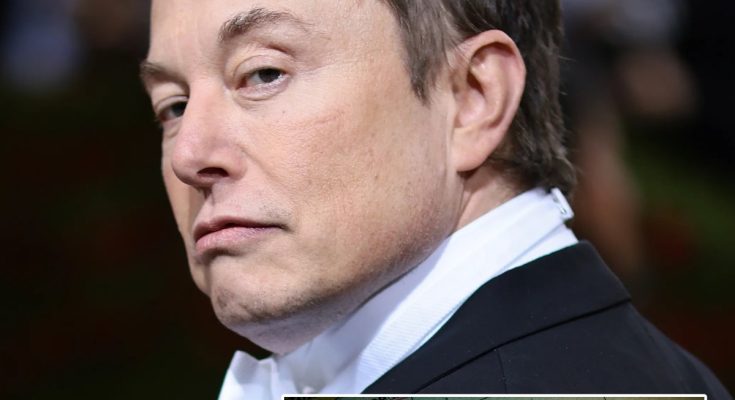Elon Musk’s sudden interest in the Philippines has everyone talking, but is it really about boosting the country’s connectivity—or something bigger?
On the surface, Musk’s plan seems simple: bring SpaceX’s Starlink satellite internet to remote areas, especially those hit by natural disasters. But why the Philippines? Why not Indonesia or Malaysia? Could there be more to his move than meets the eye?
This is the world’s richest man we’re talking about—someone known for shaking up industries like electric cars, space exploration, and even social media. So what’s driving him to invest in this island nation? With the Philippines’ low labor costs, could Musk be eyeing profits while masking it as innovation?
Musk’s impact could be monumental—think futuristic cities, eco-friendly infrastructure, and even tech hubs that put the Philippines on the global map. But there’s a flip side. Could his investments push out low-income communities, strain the country’s infrastructure, or even exploit local workers?

Elon Musk, the tech mogul behind Tesla, SpaceX, and X (formerly Twitter), is turning his sights toward the Philippines, a move that has raised eyebrows and sparked speculation. At first glance, his interest seems to align with his global strategy of expanding technological frontiers. However, a closer examination reveals underlying motives and potential consequences that may reshape the Southeast Asian nation. This article dives deep into Musk’s proposed investment in the Philippines, its implications, and whether it’s a game-changer or a gambit.
Why the Philippines?
The Philippines, an archipelago of over 7,000 islands, faces unique challenges in connectivity and infrastructure. Musk’s SpaceX, through its satellite internet division Starlink, aims to address these issues by providing high-speed internet to remote areas. Given the country’s susceptibility to natural disasters, this technology could revolutionize disaster response and communication in rural and underserved regions.
But why the Philippines and not its neighbors like Indonesia or Malaysia, which boast larger economies and populations? One reason could be the Philippines’ strategic location and a government eager to attract foreign investors. Additionally, its relatively untapped tech market provides fertile ground for Musk’s ventures. Yet, questions linger about Musk’s true intentions.
The Promise of Musk’s Investment
On the surface, Musk’s investment seems like a win-win. Here’s what it could mean for the Philippines:
1. Improved Connectivity
Starlink’s satellite technology could bridge the digital divide, bringing internet access to remote islands and mountainous regions. This would empower schools, businesses, and healthcare facilities, especially in disaster-prone areas.
2. Economic Growth
Large-scale investments by SpaceX or Tesla could inject capital into the Philippine economy, creating jobs and spurring consumer spending. Musk’s ventures often drive technological innovation, potentially positioning the Philippines as a regional tech hub.
3. Urban Development
Musk’s interest might extend to real estate and infrastructure. Futuristic smart cities, eco-friendly buildings, or even Hyperloop transportation systems could transform urban areas, easing congestion and promoting sustainable living.
4. Tourism Boost
Philippines-based SpaceX projects, such as a Spaceport or cutting-edge infrastructure, could attract international attention, boosting tourism and showcasing the country as a hub for innovation.

Potential Hidden Agendas
Despite the benefits, skeptics argue that Musk’s focus on the Philippines may mask ulterior motives. Here are the potential red flags:
Cheap Labor
The Philippines offers a low-cost labor force, with an average monthly salary significantly lower than Western countries. Critics suggest Musk could exploit this advantage to maximize profits while offering minimal compensation.
Real Estate Speculation
Musk’s potential investment in Philippine real estate could drive property prices sky-high, benefitting developers and investors while displacing low-income residents. This could deepen inequality, forcing marginalized communities further away from urban centers.
Political Influence
The Philippines’ political landscape is often influenced by powerful oligarchs. Musk, with his vast resources, could potentially sway policymakers to create laws favoring his business interests, undermining the country’s sovereignty.
Environmental Concerns
While Musk champions sustainability, his large-scale projects often come with environmental risks. In the Philippines, these could include:
Deforestation and Habitat Loss
-
- Real estate or infrastructure projects might involve clearing land, threatening biodiversity and disrupting ecosystems.
Strain on Resources
-
- Urban development could exacerbate water scarcity and strain existing infrastructure. This is especially concerning given the Philippines’ vulnerability to climate change.
Carbon Footprint
- Although Musk promotes clean energy, the construction and operation of large projects could generate significant carbon emissions.
Social and Cultural Impacts
The rapid modernization Musk could bring to the Philippines might lead to:
Gentrification
-
- Rising property values could displace low-income families, reducing access to affordable housing and widening economic inequality.
Cultural Erosion
- Modern developments might overshadow traditional practices and heritage sites, erasing aspects of Filipino culture.
Is the Philippines Ready for Musk’s Vision?
While Musk’s track record shows a commitment to innovation, the Philippines must evaluate whether it’s ready to handle the rapid changes his investments could bring. Key considerations include:
Infrastructure Readiness
The Philippines must ensure its existing infrastructure can support Musk’s ambitious projects. Without proper planning, large developments could worsen traffic congestion, water shortages, and power outages.
Regulatory Safeguards
Policymakers need to implement regulations to protect local communities, prevent exploitation, and ensure environmental sustainability.
Equitable Growth
Efforts must be made to distribute the benefits of Musk’s investments across all socio-economic groups, preventing a concentration of wealth and resources in the hands of a few.
Conclusion: Boon or Bane?
Elon Musk’s proposed investment in the Philippines is a double-edged sword. While it holds the potential to transform the nation into a technological powerhouse, it also raises concerns about exploitation, environmental degradation, and cultural loss.
The Philippines must strike a balance between embracing Musk’s vision and safeguarding its people and resources. By fostering transparency, enforcing regulations, and prioritizing sustainability, the country can ensure that Musk’s investment benefits the many, not just the few.
As this story unfolds, one thing is clear: Musk’s involvement in the Philippines will be a defining moment in the nation’s development, for better or worse.



